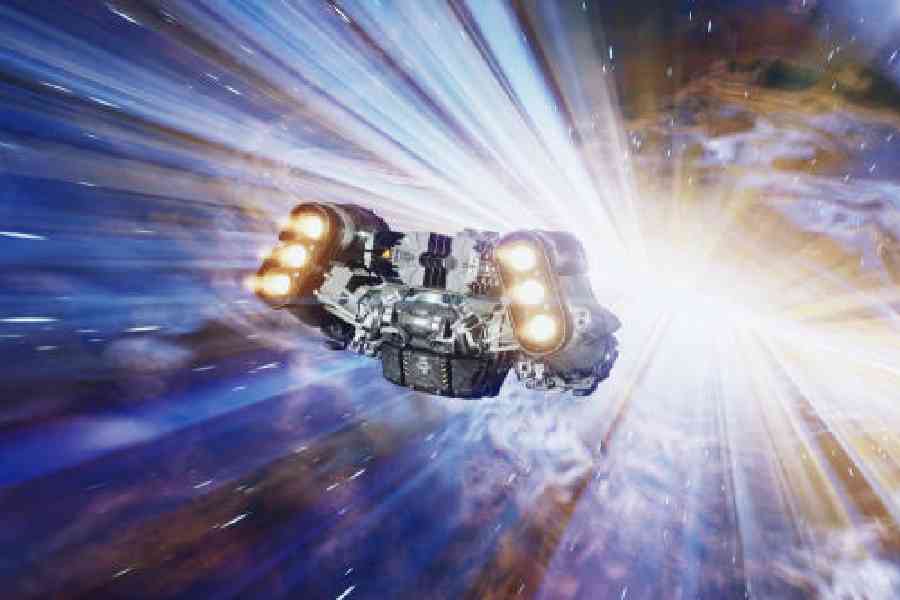Starfield almost imme- diately nudges its players to the edges of the cosmos. In the opening hours of the role-playing video game, it’s possible to land your spaceship on Earth’s moon or zip 16 light-years from a remote outpost to Alpha Centauri. When you open your map and zoom out from a planet, you can behold its surrounding solar system; zoom out again, and you’re flying past luminous stars and mysterious worlds that orbit them.
That sprawling celestial journey within Starfield, developed by Bethesda Game Studios, reveals both the tremendous potential and the monumental challenge of an open-world space adventure.
It’s the first new universe in 25 years for Bethesda, known for the Elder Scrolls and Fallout series. It’s also a high-stakes moment for Microsoft, which makes the Xbox and has long faced criticism that it produces fewer hit games than its console rivals, Sony and Nintendo. To compete, Microsoft went on a spending spree, acquiring Bethesda’s parent company in 2020 and agreeing to purchase Activision Blizzard in 2022, a $69 billion bet being challenged by regulators.
“The biggest challenge you face when building any sci-fi game is the almost limitless imagination as players we have about space and about the universe,” said Aaryn Flynn, the CEO of Inflexion Games and a former general manager of BioWare, which makes the sci-fi Mass Effect series. “Players want that captured in the experience”.
Todd Howard, Bethesda executive producer, is aware that Starfield would have to be expansive to reflect the allure of space travel.

“All of us, I think, at some point look to the sky and say, ‘Man, I wonder what it would be like to blast off and land on the moon?’ or, ‘I wonder what would be beyond that?’ or, ‘What’s in that star?’ or, ‘Is there life out there?’” Howard said, adding, “We needed the scale to have that feeling. We could have made a game where there are four cities and four planets. But that would not have the same feeling of being this explorer.”
Starfield has promised 1,000 searchable planets, about 10 per cent of which contain life in addition to quests and valuable raw materials. That scale has caused some concern that the studio responsible for glitchy releases like Skyrim and Fallout 76 is in over its head — and that some aspects of space will be a black hole of fun.
The game’s developers say they are confident they have struck the right balance by using a mix of scientific data and artificial intelligence to generate realistic planets, then fine-tuning those worlds with human programmers who also craft the quests and the enemies that players will encounter.
“We have artists who hand-built the rocks, partly from scanning real rocks in our world and changing them,” Howard said.
When players land on a new planet in Starfield, they may encounter a tangle of atlas weed or discover that giant crabs can viciously attack. Those who enjoy hoarding can pick up items as innocuous as a jar of sealant in an abandoned laboratory.
But exactly how the game unfolds will differ for each player. Howard acknowledged that Starfield posed “an incredibly difficult design challenge” — one his team tried to solve by building a planet content manager that allows certain quests to be placed as players reach the surface. One player might run into a derelict outpost; someone else might hear another spaceship’s engine as she wanders. Developers have also tried to ensure that very little will happen in some cases so that players “get some periods of loneliness,” Howard said.
Starfield draws inspiration from movies and television shows like Interstellar, Battlestar Galactica and The Martian, Howard said, but also from real organisations like Nasa and Elon Musk’s SpaceX. The game’s main story focuses on collecting mysterious alien artefacts and can be completed in about 30 hours. But players can spend hundreds more customising spaceships, harvesting resources, exploring planets and fighting bloodthirsty pirates.
“The point of the vastness of space is that you should feel small. It should feel overwhelming,” said Ashley Cheng, Bethesda’s managing director. “Everyone’s concerned that empty planets are going to be boring. But when the astronauts went to the moon, there was nothing there. They certainly weren’t bored.”
NYTNS











